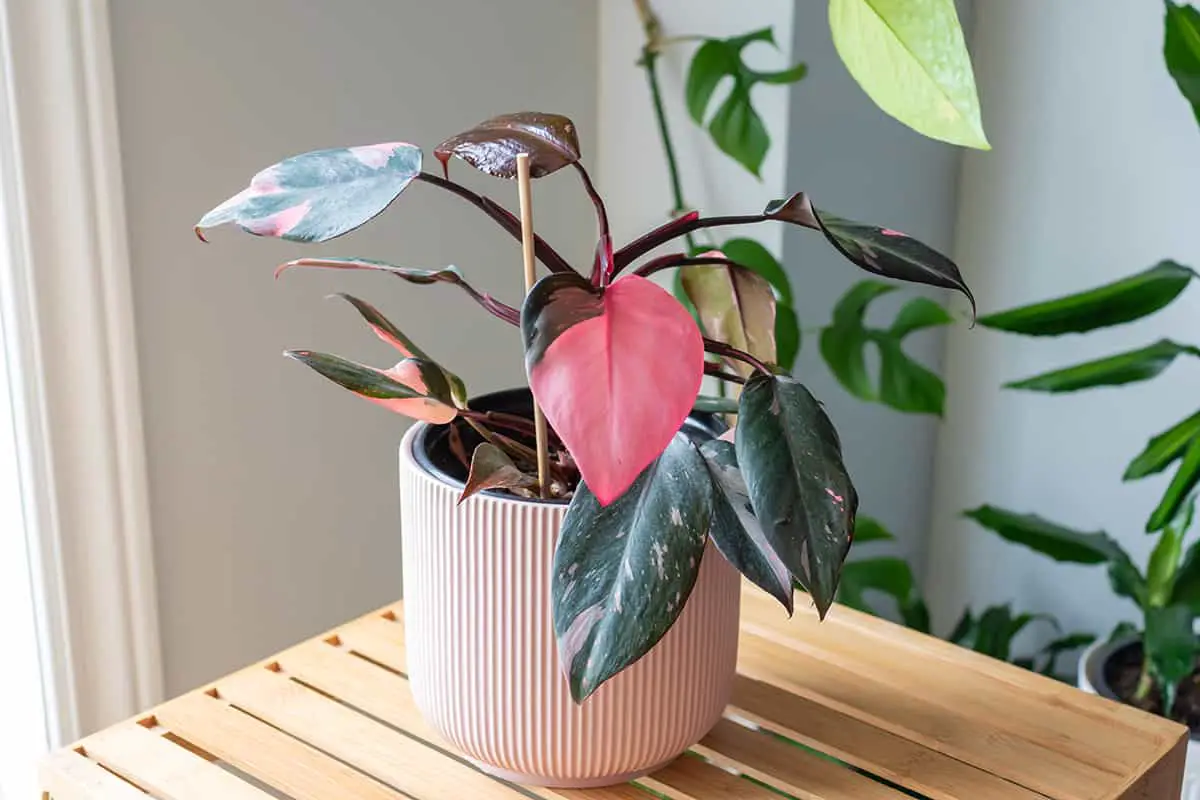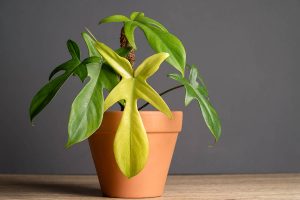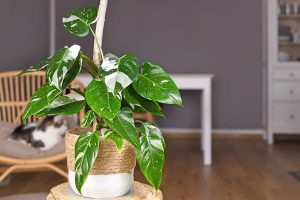Your Philodendron Pink Princess is more than just a plant—it’s a striking statement piece with its vibrant pink and green leaves. Yet, despite its royal name, this tropical beauty doesn’t demand high maintenance. Proper care can keep those unique leaves bright and healthy. Let’s dive into the essentials of nurturing your Pink Princess, ensuring it thrives in your indoor garden.
Table of Contents
Where Did the Pink Princess Come From?

The Philodendron Pink Princess is a popular houseplant known for its stunningly beautiful color combination of dark green, dark red, and pink leaves. It’s a cultivated variety of the Philodendron erubescens species, which is native to tropical America. This plant stands out for its unique appearance and has quickly gained popularity among plant enthusiasts.
Pink Princess is a patented hybrid, created by skilled horticulturists through selective breeding. The goal was to develop a plant with remarkably vibrant pink hues amidst dark foliage. By refining the breeding process, they managed to create a plant that not only looks striking but also suits a wide range of indoor environments.
Why Is Pink Princess So Expensive?
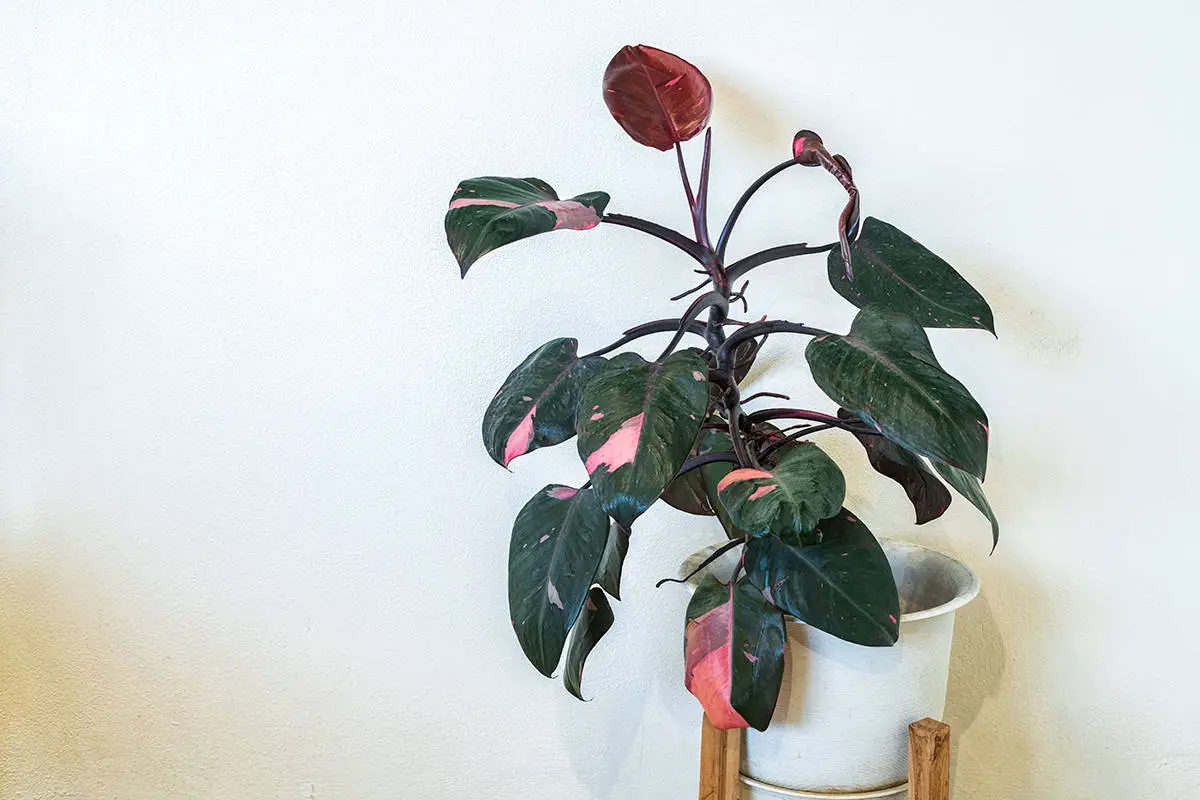
The Pink Princess Philodendron is a highly sought-after plant due to its unique appearance and rarity. Its beautiful foliage displays a mix of green and pink colors in varying shades, making it a stunning addition to any home or garden. One reason for the hefty price tag is the scarcity of this plant variety.
In addition, cultivating the Pink Princess requires meticulous care and patience. The philodendron family comprises numerous species, but the Pink Princess is one of the self-heading types. Unlike vining species, these plants need special attention to maintain their coveted appearance, such as adequate humidity, temperature, and sunlight. Furthermore, the vibrant pink pigmentation in the leaves is caused by a genetic mutation, which can be challenging to replicate in large quantities.
Another factor influencing the cost is the time it takes for the Pink Princess to reach a desirable size for sale. The plant’s growth rate is slower than that of other philodendron varieties, meaning growers must invest more time and resources into nurturing it before bringing it to market. This increased effort adds to the expense for both growers and buyers.
Propagation
When propagating your Philodendron Pink Princess, it’s important to start with a healthy stem cutting. Take a 3 to 6-inch long section, and make sure to remove the lower leaves. This will encourage successful rooting in either water or a well-drained potting soil source.
Start by placing your stem cutting in a glass filled with clean water. Ensure it’s in a bright spot, but not in direct sunlight. Remember to change the water frequently to promote healthy root growth. Once roots are several inches long, you’re ready to transfer the cutting source.
If you opt for potting your cutting in soil, choose a well-drained medium such as perlite or a high-quality potting mix. Plant the cutting about 2 inches deep, and maintain consistent moisture levels. Make certain the soil is damp, but not soggy, to promote optimal root development.
Monitor your propagated Philodendron Pink Princess closely during the early stages. Avoid overwatering, and place it in suitable lighting conditions. Within a few weeks, you’ll notice new growth signalling successful propagation. Continue to care for the young plant by meeting its needs for light, water, and nutrients to ensure healthy development.
Light

When caring for your Philodendron Pink Princess, providing the right light conditions is crucial. They thrive in bright, indirect light. Place the plant near a window that receives diffused sunlight. Avoid direct sunlight, as it can cause the leaves to burn or fade.
You can also consider using artificial lighting, such as LED grow lights. These help maintain consistent lighting conditions, especially during winter months when natural light is limited. Adjust the light intensity and duration to mimic the plant’s natural environment.
It is important to monitor your plant’s reaction to light conditions. If the plant’s leaves are pale or yellow, it may be receiving too much light. Conversely, if the leaves are dark in color, or if there’s limited new growth, inadequate light might be the issue.
Soil
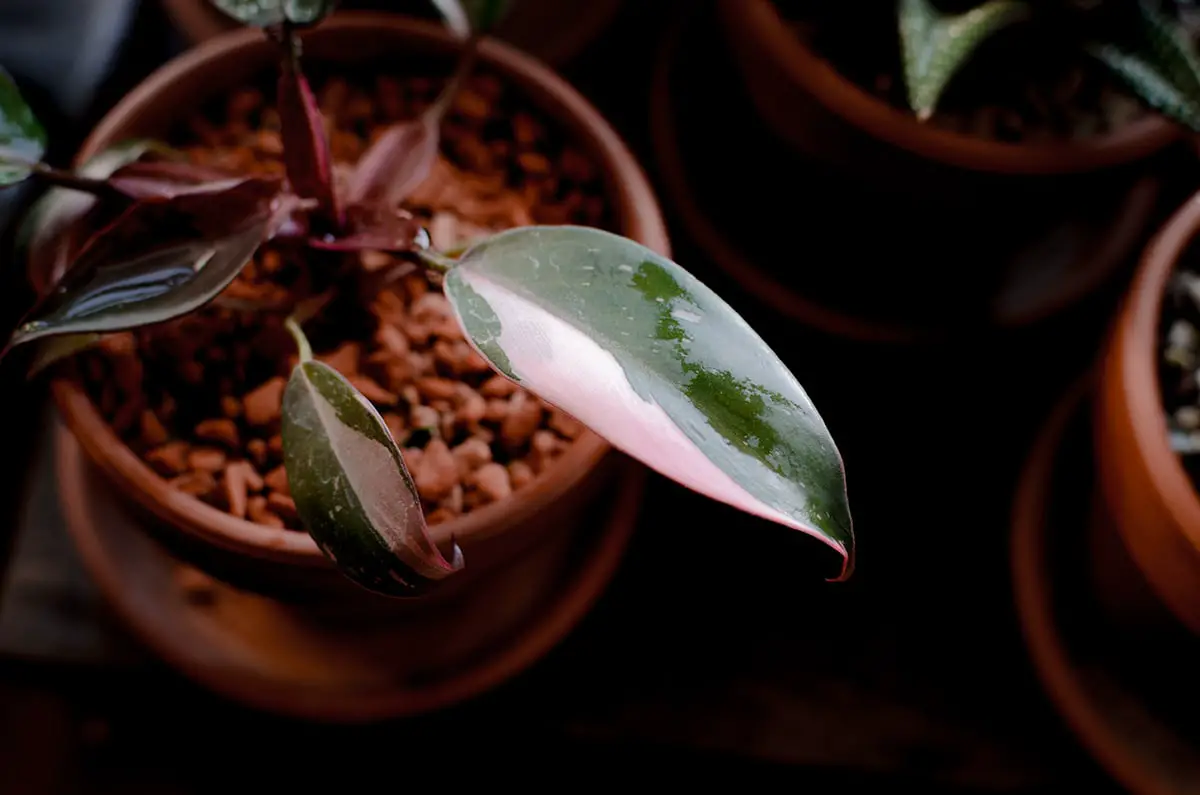
The ideal soil should be loose, well-draining, and rich in organic matter. A suitable choice for your plant is an all-purpose potting soil, which ensures the proper support and prevents toppling.
To improve drainage, you can add perlite or coarse sand to your potting mix. A mix of two parts potting soil, one part perlite, and one part coarse sand, is typically recommended for Philodendron Pink Princess plants. This combination allows for adequate airflow around the roots and reduces the risk of overwatering.
In addition to drainage, pay attention to the soil’s acidity level. Philodendron Pink Princess plants thrive in slightly acidic soil, with a pH range of 6.0 to 6.5. You can use a soil pH test kit to check the acidity level. If the pH is too high or low, you can adjust it using appropriate soil amendments.
Remember to keep your Philodendron Pink Princess evenly moist, but not wet. It is important to water it when the top of the soil is dry and avoid letting the plant sit in soggy soil or saucers of water.
Water
Maintain evenly moist soil without letting the plant sit in soggy conditions. Over-watering can lead to root rot and negatively affect the plant’s health.
When determining when to water, check the top of the soil. If it feels dry, it’s time to water your Pink Princess. Remember to use water at room temperature to avoid shocking the plant. You can also look for signs like drooping leaves, which can indicate the need for more water.
Balancing the moisture in your Philodendron Pink Princess’ environment is important. Be mindful of humidity levels, especially during the winter months when heaters can dry out the air. To increase humidity, place a tray of water next to the plant or use a humidifier. A stable and moist environment will ensure your Pink Princess remains vibrant.
Temperature and Humidity
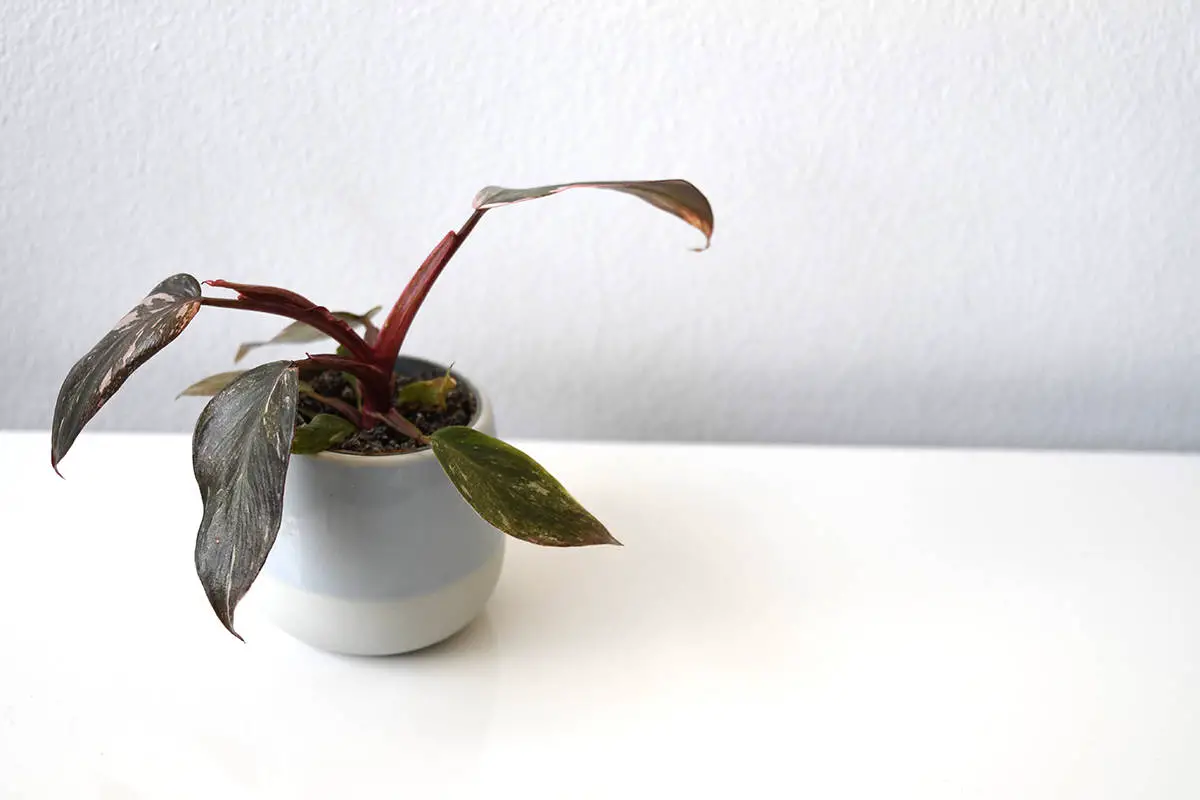
Your Philodendron Pink Princess thrives in typical home temperatures ranging from 65°F to 80°F. It’s essential to maintain consistency in temperature, as sudden fluctuations may harm your plant.
This plant prefers a high-humidity environment. However, it can also tolerate low humidity levels found in homes, especially in winter. To raise humidity, you can place your Philodendron Pink Princess on a tray with moist pebbles or use a humidifier in the room.
During the colder months, keep your Philodendron Pink Princess away from drafts or heating vents. This helps ensure that your plant remains healthy and vibrant throughout the year.
Fertilizer
Utilize a balanced all-purpose fertilizer once or twice a month during the plant’s active growing season, which is typically spring and summer.
When applying fertilizer, be careful not to overdo it. Over-fertilizing may lead to leaf burn and can potentially harm the plant. To avoid this issue, make sure to dilute the fertilizer according to the package instructions. It’s better to use smaller amounts more frequently, rather than a large dose all at once.
Monitoring the plant’s appearance and growth will provide valuable insight into its health. A well-fertilized Pink Princess will have vibrant, healthy leaves and steady growth. If you notice any discoloration or stunted growth, adjust the fertilizer regimen accordingly.
Pruning
Begin by identifying the aerial roots which provide the necessary support for this gorgeous plant. You can either leave the aerial roots, or trim them back if you prefer a tidier appearance.
To promote healthy growth, you should remove any dead or damaged leaves. This preserves the plant’s energy and prevents the spread of diseases to other parts of the plant.
Hold your plant steady, and use a clean pair of sharp scissors or pruning shears to trim the damaged leaves close to the stem. Remember to sterilize your tools before and after pruning to avoid transmitting diseases.
Another pruning technique is removing overcrowded leaves or branches to increase air circulation around your Pink Princess. This helps prevent diseases and promotes optimal growth.
Lastly, regularly monitor the growth of your Pink Princess. If you notice any signs of stagnation or deterioration, it may be necessary to adjust the pruning frequency. Your ultimate goal is to maintain the vibrant pink and green foliage that makes the Philodendron Pink Princess a unique and captivating houseplant.
Potting and Repotting
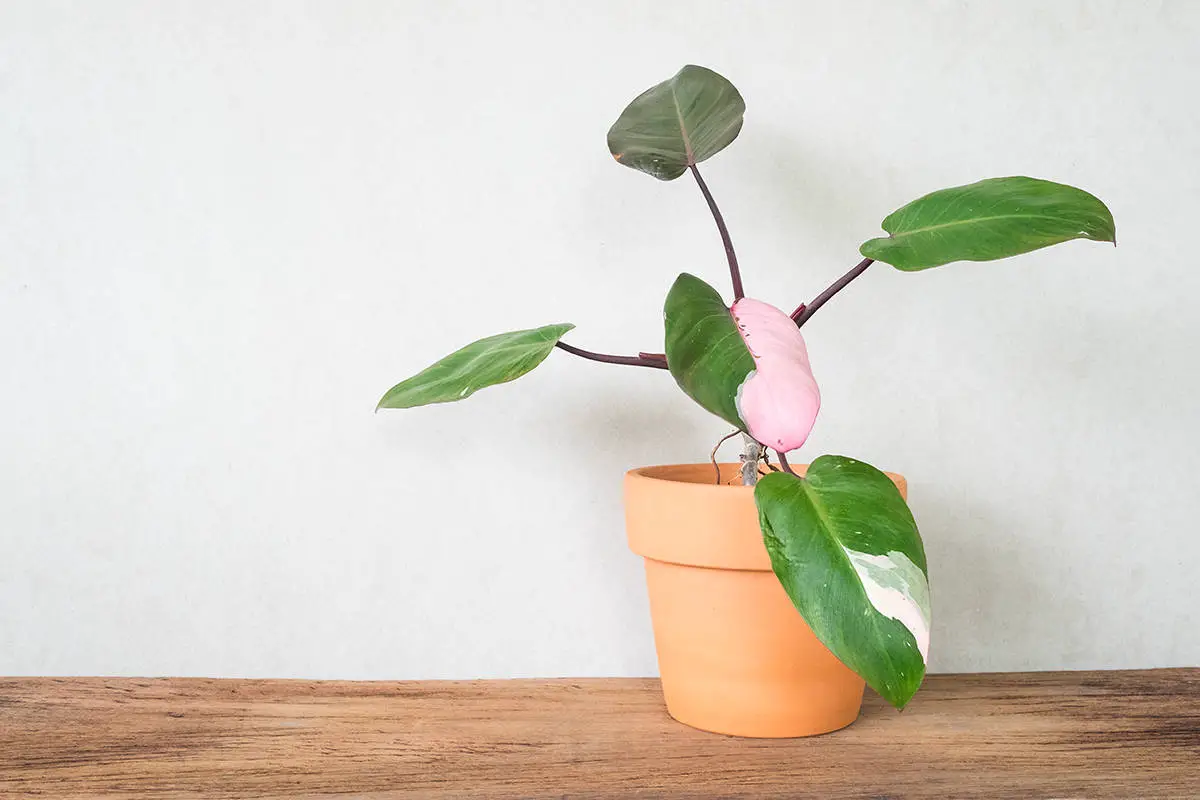
When potting your Philodendron Pink Princess, choose a well-draining potting mix. A mixture of equal parts peat and perlite is ideal for this plant. Make sure the pot has drainage holes to prevent waterlogging and root rot.
Repotting is essential for your Philodendron Pink Princess. Plan on repotting every 2-3 years, as the plant matures. Spring is the best time to repot, when the plant is actively growing.
To repot, gently remove your plant from its current pot and check the roots. Trim any damaged or excessively long roots, then place the plant into a new pot, about 1-2 inches larger in diameter than the previous one. Fill the new pot with fresh potting mix and water thoroughly.
Root Pruning can help control growth. In some cases, you might prefer to trim the roots instead of repotting. This approach helps maintain the plant’s size and is particularly useful for houseplants in limited space.
To perform root pruning, remove the plant from the pot, trim away up to one-third of the outer roots, and then repot using the same pot and fresh soil.
Always be gentle with your Philodendron Pink Princess during the repotting process. Avoid damaging the roots and stress the plant as little as possible. Remember to monitor your plant’s progress after repotting and provide the necessary care to promote healthy growth.
Common Problems & Troubleshooting
Let’s discuss the common problems and their solutions.
Yellow Leaves: Yellow leaves on your Pink Princess are likely due to overwatering. Ensure your plant gets evenly moist soil, but not wet. Water only when the top of the soil is dry, and avoid plants sitting in soggy soil.
Brown Leaf Tips: Look out for brown tips, as they indicate insufficient humidity. To resolve this, mist your plant regularly, or use a humidifier to maintain optimal air humidity near your Philodendron.
Drooping Leaves: Droopy leaves can be a sign of both underwatering and overwatering. Check the moisture in your plant’s soil. If it’s wet, reduce the watering frequency, and if it’s too dry, water your plant more.
Pest Issues: You might see pests like spider mites and mealybugs on your Pink Princess. To deal with them, keep your plant clean by wiping the leaves with a damp cloth and using insecticidal soap or Neem oil as needed.
Slow Growth: Philodendron Pink Princess requires light fertilization during the active growing months. If you find your plant growing slowly, apply an all-purpose fertilizer once or twice a month.
